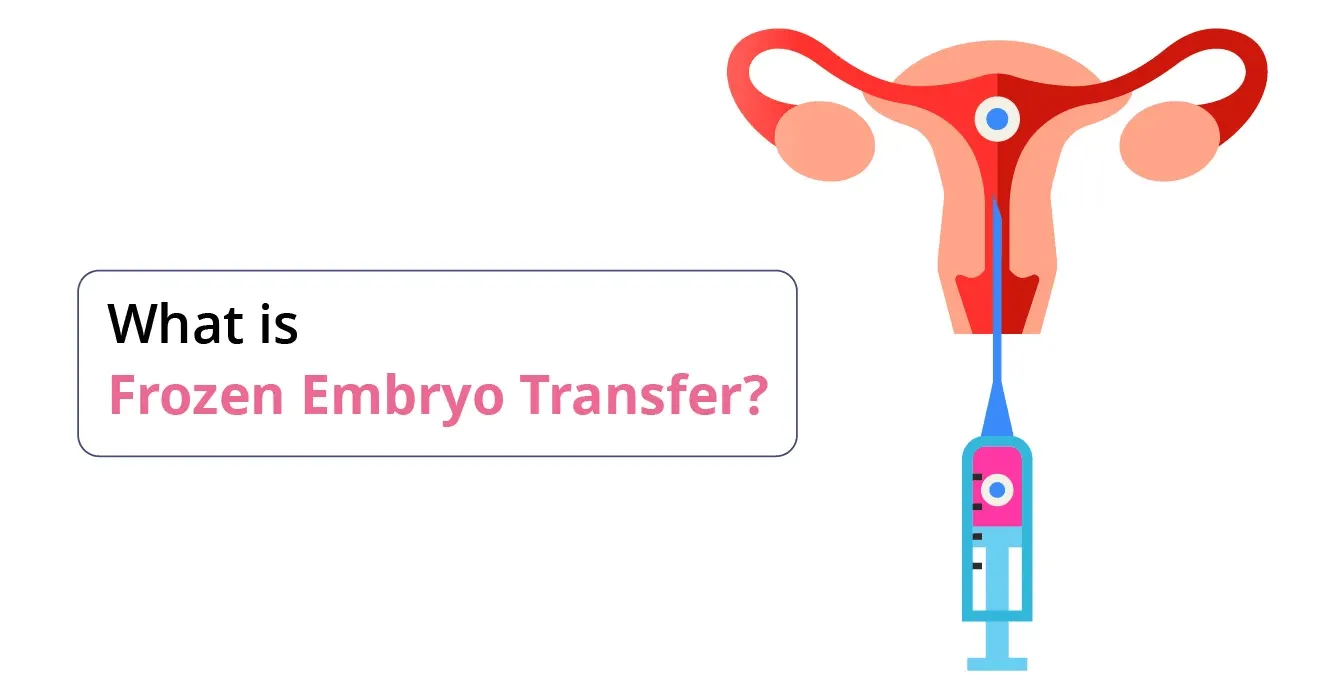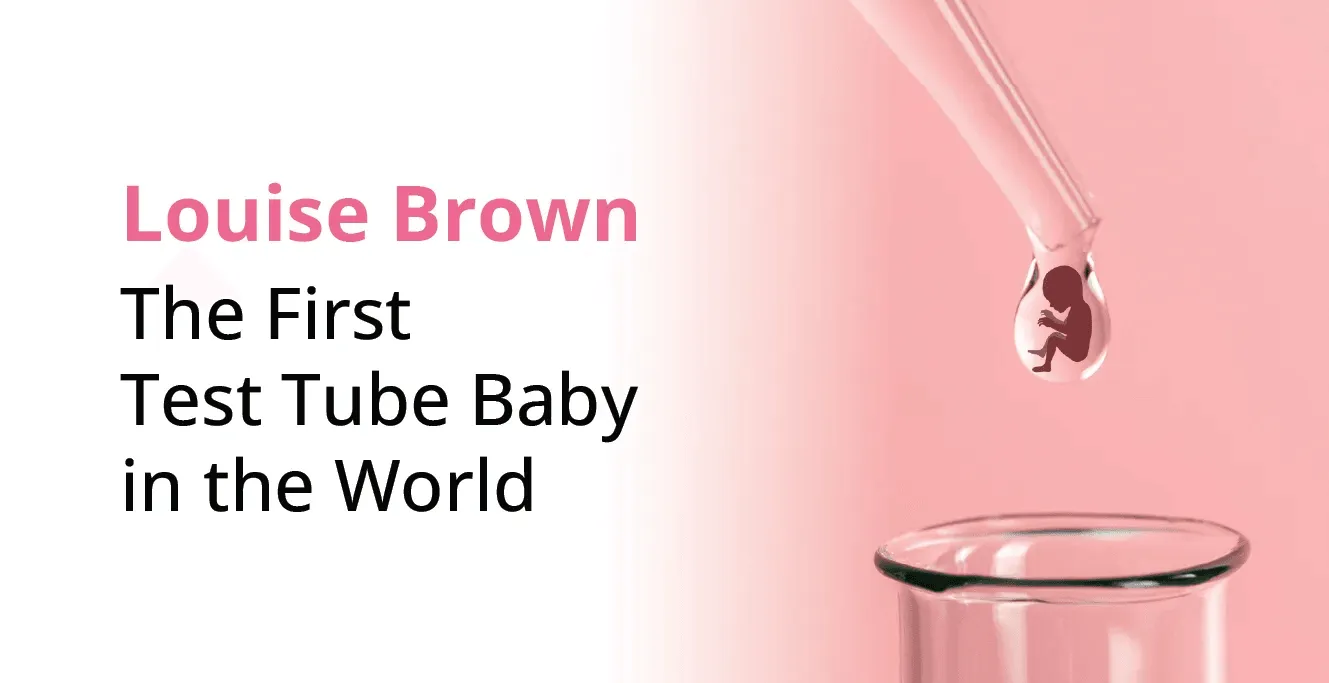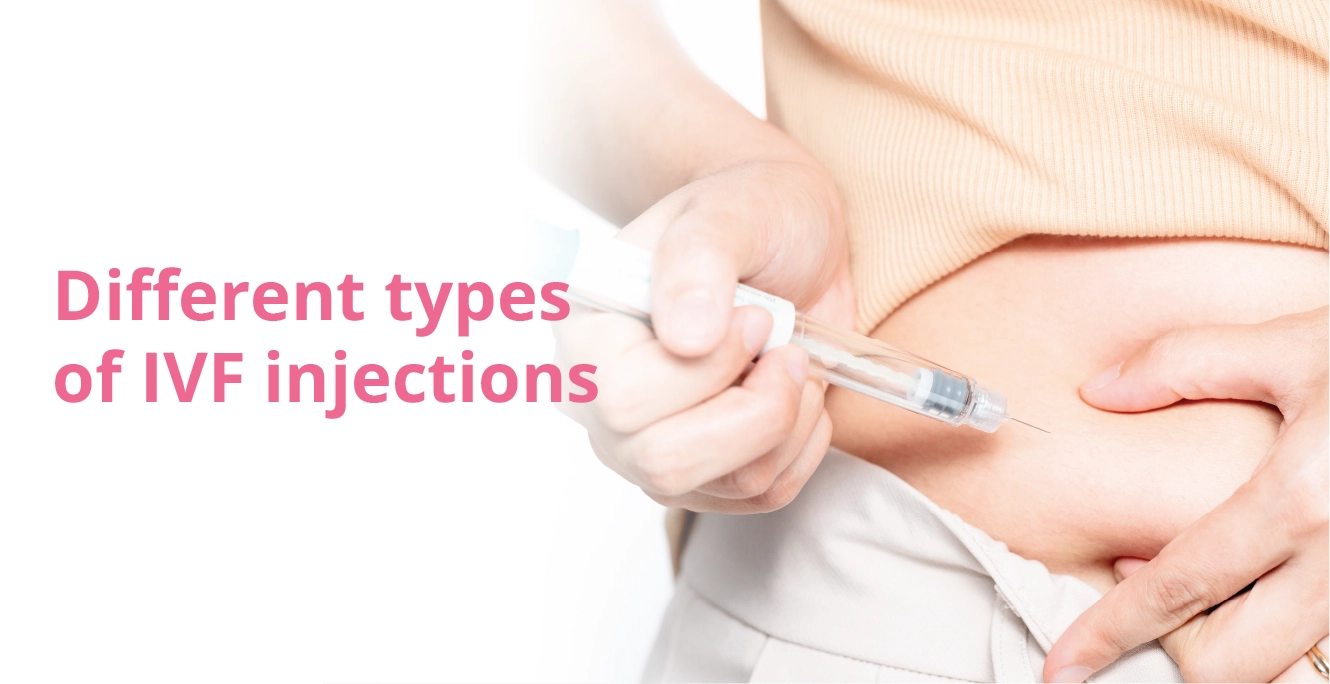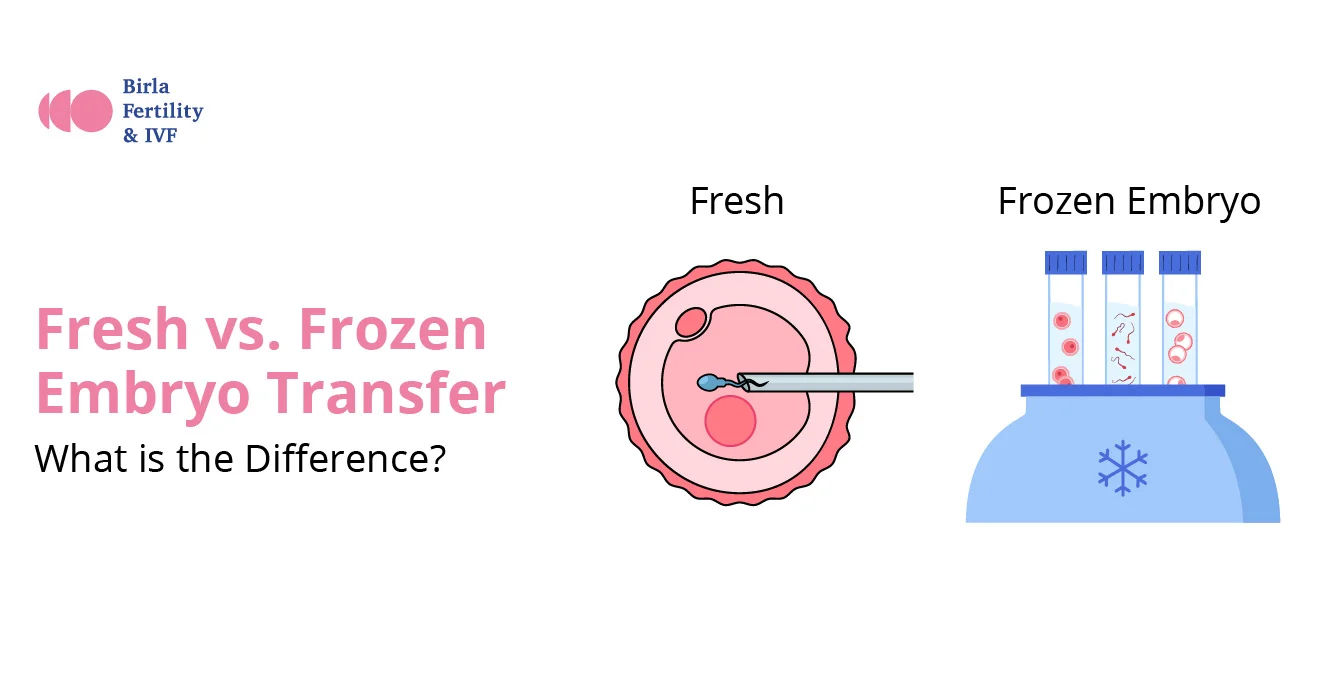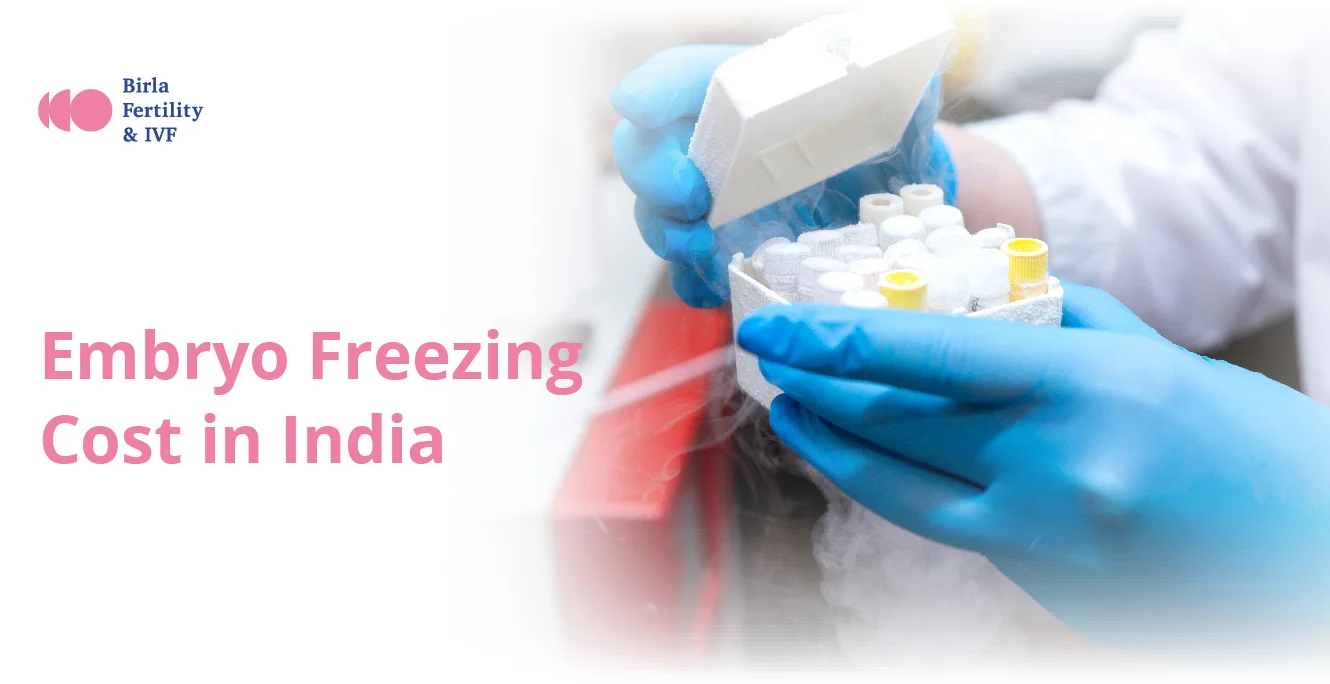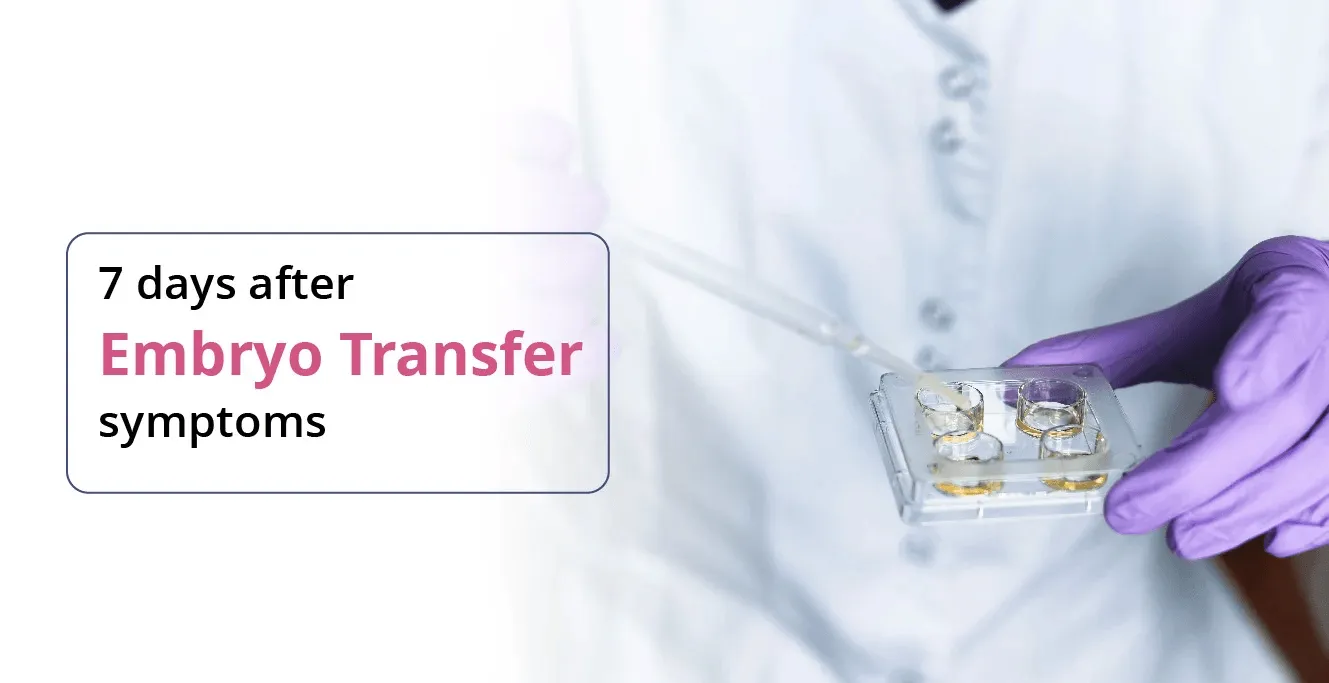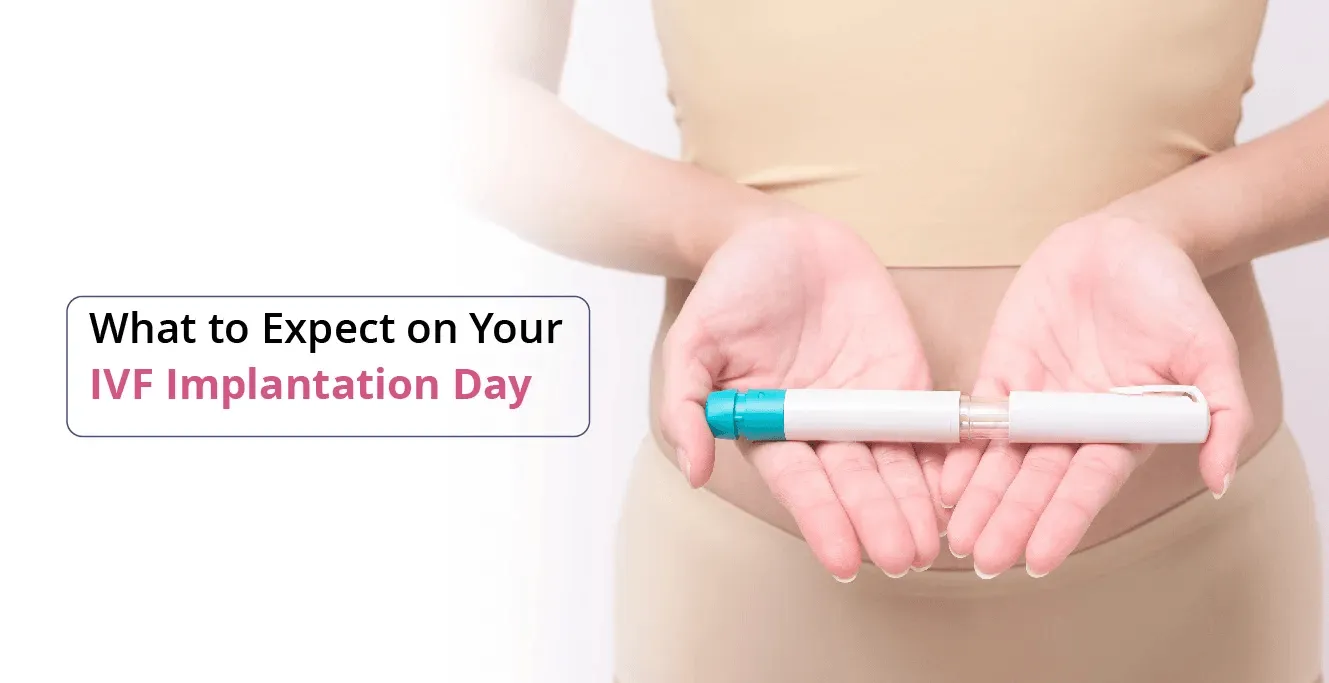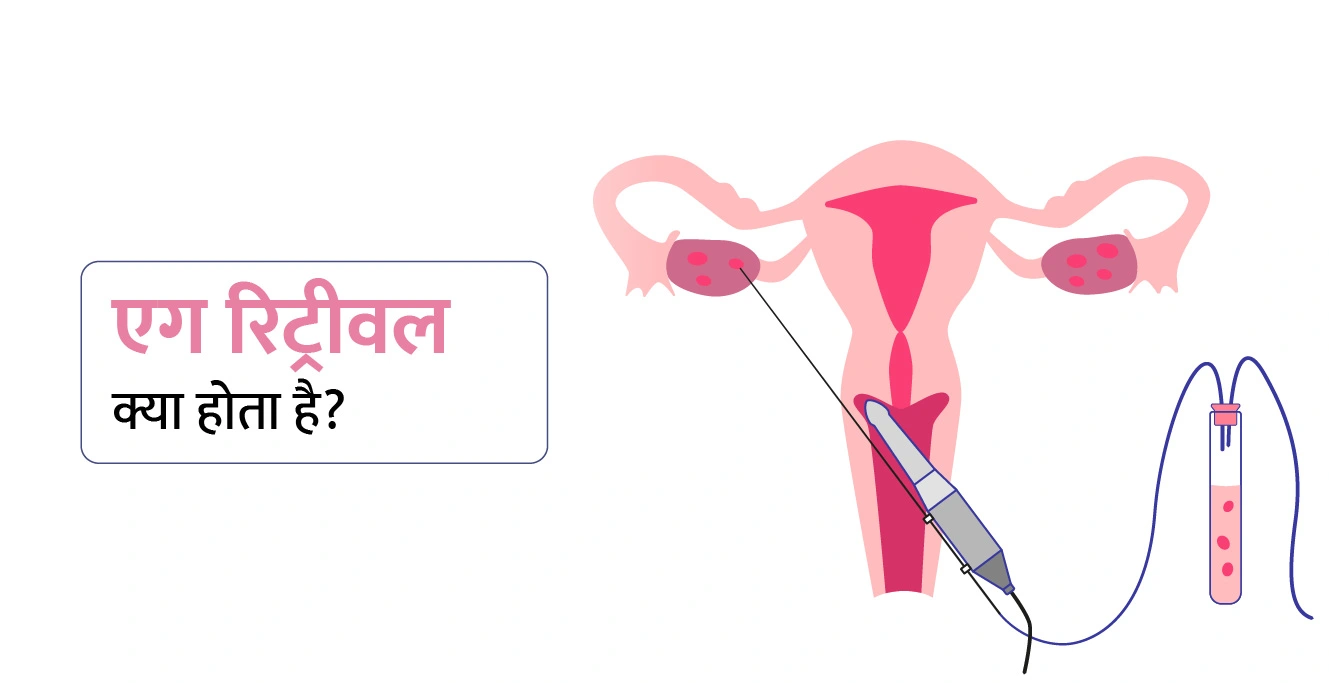Quick Highlights
- Frozen Embryo Transfer (FET) is a fertility treatment that involves transferring previously frozen embryos into the uterus.
- It is a commonly used procedure in assisted reproduction techniques.
- The process of frozen embryo transfer includes: 1. Embryo formation, 2. Embryo freezing, also known as cryopreservation, 3. Embryo thawing, 4. Embryo transfer
- Success rates depend on factors like embryo quality, uterine health, and lifestyle.
- Potential risks include mild cramping, bloating, or rare complications like multiple pregnancies.
- The blog covers the FET process, preparation tips, risks, and how to choose the right fertility clinic.
FET is an advanced technique of ART used for fertilisation to achieve a future pregnancy. The process of transferring cryopreserved embryos into a woman’s uterus to induce pregnancy is known as frozen embryo transfer (FET), and it is one of the most commonly used methods of assisted reproductive technology. FET requires meticulous coordination between the patient and the fertility clinic during a number of key steps. In the given article, we cover the FET process, preparation tips, risks, 7 days after embryo transfer symptoms, how to choose the right fertility clinic, and much more.
When is Frozen Embryo Transfer Recommended?
There are a few situations where doctors might suggest using frozen embryos instead of fresh ones:
- When frozen embryo transfers have a better chance of success, especially for women with conditions like PCOS
- To preserve fertility by freezing embryos when you’re younger and using them later
- To lower the risk of a condition called ovarian hyperstimulation syndrome (OHSS) that can happen with fresh embryo transfers
Benefits of Embryo Freezing
- Higher success rates than egg freezing
Frozen embryos usually have a better chance of implantation compared to frozen eggs. This is because embryos have already developed past the fertilisation stage, which increases the chances of a successful pregnancy during IVF. - Preserves fertility for medical or personal reasons
Embryo freezing is especially beneficial for individuals undergoing medical treatments like chemotherapy or radiation that can affect fertility. It’s also chosen by couples who want to delay pregnancy for career, education, or other personal reasons. - Allows multiple IVF attempts from one egg retrieval cycle
Since multiple embryos are usually created during one IVF cycle, freezing them gives you the option of trying again without repeating the entire ovarian stimulation and egg retrieval process. - Helps reduce the risk of ovarian hyperstimulation syndrome (OHSS)
In cases where the woman is at risk of OHSS after egg retrieval, doctors may advise freezing all embryos and postponing transfer. This approach allows the body to recover and reduces complications. - Flexibility in planning pregnancy
Frozen embryo transfer (FET) allows couples to choose the most suitable time for pregnancy whether it is after medical treatment, achieving life goals, or simply waiting for better physical or emotional readiness.
How to Prepare Before the Transfer
Before your frozen embryo transfer, your doctor will run some tests to make sure you are ready for the transfer process:
- Ovarian reserve testing: This assesses the number and quality of eggs you have. It’s done at the start of IVF before freezing the embryos.
- Uterine lining testing: Your doctor will look at your endometrium (uterus lining) with an ultrasound and check your hormone levels. This is done to ensure it is thick enough and ready for an embryo.
- Semen analysis: During the first IVF cycle, your doctor will check your partner’s sperm to pick the best ones for preparing embryos.
Frozen Embryo Transfer Step-by-Step
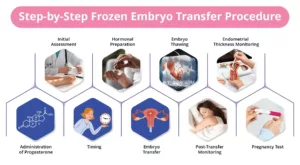
Ovarian Stimulation and Egg Retrieval
The first step in a FET procedure is typically ovarian stimulation, which involves taking hormone medicines to encourage the growth of many follicles in the ovaries. The size and maturity of the eggs are regularly monitored using ultrasounds and hormone-level tests. The eggs are extracted transvaginally after the trigger shot is given to encourage final maturation once the follicles have reached the proper size.
Embryo Development and Fertilisation
The recovered eggs are subsequently fertilised in the lab either using traditional in vitro fertilisation (IVF) or, if sperm-related difficulties exist, intracytoplasmic sperm injection (ICSI). The resultant embryos are grown in a controlled environment for a number of days after fertilisation to reach the blastocyst stage, where they are most developed and have a greater probability of implantation.
Embryo Freezing (Cryopreservation)
When the embryos reach the desired developmental stage, the embryologists choose the best embryos of the highest calibre for transfer. The remaining high-quality embryos that are not immediately transplanted can be vitrified, a form of cryopreservation, for later use. Patients can perform several FET cycles thanks to cryopreservation without having to go through the ovarian stimulation and egg retrieval procedures again.
Preparing the Uterine Lining
The woman’s uterine lining is prepared for embryo transfer after the embryos have been cryopreserved. To produce the ideal environment for embryo implantation, this usually entails hormone replacement therapy (HRT) or controlled ovarian stimulation. The uterine lining’s thickness and receptivity are evaluated via ultrasound scanning and hormone level monitoring.
Thawing and Selection of Embryos
Prior to the planned FET, the chosen frozen embryos are thawed and their viability is evaluated. Embryos that have the best chances of being implanted successfully often have a high survival rate after being thawed. The embryos may occasionally be subjected to preimplantation genetic testing (PGT) to check for genetic anomalies.
Day of Embryo Transfer
The selected embryo(s) are carefully loaded into a thin, flexible catheter on the day of the FET operation. The embryo(s) are transferred into the uterus during a generally quick and painless operation on the patient. The patient is typically asked to rest briefly after the transfer before being given the go-ahead to resume regular activities.
Two Week Wait
The “two-week wait” period begins after the embryo transfer, during which the patient is prohibited from conducting pregnancy tests to prevent inaccurate findings. This time frame is critical because it gives the embryo enough room to implant and the hCG pregnancy hormone enough time to reach detectable levels.
The Pregnancy Test and Beyond
The patient will undergo a blood test to determine the hCG levels, which confirms the pregnancy. This is done about 10 to 14 days following the embryo transfer. A positive test confirms pregnancy, and subsequent ultrasounds are used to monitor the fetus’s progress to ensure a healthy pregnancy.
What Happens After Frozen Embryo Transfer?
Your body goes through important changes as the embryo tries to implant. Post-transfer, the embryo passes through the following critical developmental stages:
- Day 1-2: The embryo starts hatching and attaching to the uterine lining.
- Days 3-5: Implantation occurs as the embryo burrows deeper.
- Days 6-8: Your body may start producing hCG, the pregnancy hormone.
- Day 9: hCG can be detected in a blood test to confirm pregnancy.
Possible Symptoms
During the two-week wait before a pregnancy test, some individuals may experience a few symptoms and it varies from person to person.
- Spotting or Light Bleeding: This could be implantation bleeding or just a side effect of medications.
- Cramping: Feels like period cramps and can be due to implantation or hormonal changes.
- Fatigue: Feeling extra tired is common as your body is adjusting to the changes.
Suggestion: After the embryo transfer, patients are advised to limit vigorous physical activity for several days to support implantation. While normal daily activities can typically resume, caution is recommended due to possible ovarian enlargement from previous treatments.
Post-Embryo Transfer Diet
A balanced diet plays a crucial role in supporting implantation and a healthy pregnancy. Here’s a recommended After Embryo Transfer diet chart to follow post-embryo transfer:
- High protein foods: Lean meats, eggs, and dairy for cell growth.
- Healthy fats: Avocados, nuts, and seeds to support hormone production.
- Fibre-rich foods: Whole grains, fruits, and vegetables to prevent constipation.
- Iron and folic acid: Spinach, lentils, and citrus fruits to aid foetal development.
- Hydration: Drink plenty of water to maintain blood flow to the uterus.
What is the Survival Rate of Embryos?
Freezing and thawing embryos is a common part of fertility treatments, but not all embryos survive the process. The success rate depends on factors such as the freezing method used and the woman’s age at the time the embryos were created.
- What to Expect After Thawing: Around 65-70% of frozen embryos survive the thaw. Some embryos (approximately 30-35%) emerge perfectly intact, just as if they had never been frozen. Others may lose a few cells but can still be viable, while some unfortunately don’t survive.
- Freezing Method Matters: The newer vitrification method (fast freezing) increases the survival chances of embryos, with a survival rate of up to 97% compared to the older slow-freezing method, which has a lower success rate of approximately 83%.
Success Rates of Frozen Embryo Transfer
The success of a frozen embryo transfer depends on several factors, including age, embryo quality, and the method used for freezing and implantation.
- Age Matters: Women under 35 have about a 60% pregnancy rate per transfer, whereas for women over 40, the rate drops to around 20%.
- Fresh vs. Frozen Transfers: Studies show that live birth rates are quite similar for both, around 48-50%.
- Embryo Quality: High-quality embryos can lead to a 79% live birth rate, whereas lower-quality embryos have a 28% success rate.
- Uterine Lining (Endometrial Preparation): A well-prepared uterine lining improves implantation chances.
- Freezing Techniques: Advances in cryopreservation (like vitrification) have improved embryo survival and pregnancy rates.
Dos & Don’ts for Frozen Embryo Transfer (FET)
Here are a few dos and don’ts that you can keep in mind to optimise your chances of a successful and healthy pregnancy.
Do’s for Frozen Embryo Transfer (FET)
- Follow prescribed medication: Medication Comply exactly with the medication schedule that your fertility physician has recommended. The uterine lining must be prepared for embryo implantation with hormone medicines.
- Practice a healthy lifestyle: Eat a balanced diet, do frequent, moderate exercise, and get enough sleep to maintain a healthy lifestyle. Living a healthy lifestyle can help FET be successful.
- Stay well hydrated: Maintaining proper hydration helps the uterus receive the best blood flow, which promotes the growth of a receptive uterine lining.
- Join stress management techniques: Engage in stress-reduction exercises like yoga, meditation, or deep breathing. High amounts of stress can affect implantation and hormone levels.
- Schedule routine check-ups: Attend all regular medical appointments, including those for blood tests and ultrasounds. The best time to transfer an embryo is guaranteed by routine monitoring.
- Maintain proper cleanliness: To reduce the risk of infection, adhere to the hygiene instructions provided by your clinic before and after embryo transfer.
- Stay well informed: Understand the entire FET procedure, possible pharmaceutical side effects, and any restrictions that your doctor may have advised.
- Dress comfortably: To minimise stress and physical discomfort on the day of the transfer, dress comfortably.
- Follow doctor’s guidelines: Follow your doctor’s instructions carefully about fasting, medications to take before the transfer, and post-transfer restraints.
Don’ts for Frozen Embryo Transfer (FET)
- Limit excessive Caffeine: Avoid consuming too much caffeine, which might impair uterine blood flow.
- Avoid strenuous activities: Avoid strenuous exercise or heavy lifting in the days leading up to FET since these activities may affect uterine blood flow and implantation.
- Stay away from hot baths and saunas: Too much heat might interfere with embryo implantation, so stay away from hot baths, saunas, and hot tubs.
- Don’t skip prescribed medicines: Avoid skipping doses of your medications by adhering to the recommended schedule. Creating the ideal hormonal environment requires consistency.
- Avoid excessive salt intake: A balanced diet is necessary, but excessive salt consumption can cause bloating and water retention.
- Limit stressful activities: Avoid high-stress activities that can have an impact on hormone levels and general well-being.
- Abstain from sexual intercourse: To avoid potential interruption of the embryo implantation process, your doctor may advise refraining from sexual activity for a set amount of time before the FET.
- Avoid usage of alcohol, tobacco, and drugs: Since they can have a negative effect on fertility and embryo implantation, alcohol, drug, and tobacco use should be avoided during the FET cycle.
- Seek support from family and friends: While it’s common to feel anxious during the FET procedure, try to keep your stress and worry levels in check. Reach out to your friends and family for support, comfort, and consolation.
What is the Cost of Embryo Freezing?
The approximate embryo freezing cost in India may range between Rs. 90,000 and Rs. 1,20,000. However, the final cost of embryo freezing may vary from one patient to another based on a number of variables, such as the clinic’s location, its track record for success, the particular services included in the package, and any additional procedures or medications needed. A standard frozen embryo transfer (FET) cycle can cost anywhere from 50,000 to 2,00,000 in India on average. In addition, there can also be recurring yearly storage fees to keep the frozen embryos. Depending on the clinic, these costs can range from Rs. 5,000 to Rs. 10,000 each year. Refer to the table for a thorough estimation of what can affect the final cost of embryo freezing:
| Step | Factors | Cost Range |
| Consultation | Initial consultation and evaluation | ₹1,000 – ₹5,000 |
| Pre-cycle screening | Blood tests, ultrasounds, hormone tests | ₹5,000 – ₹10,000 |
| Medication | Stimulation MedicationsHormone medications for follicle growth | ₹10,000 – ₹30,000 |
| Monitoring | Ultrasounds and hormone level monitoring | ₹5,000 – ₹10,000 |
| Egg Retrieval | A surgical procedure to collect eggs | ₹15,000 – ₹50,000 |
| Embryo Culture | Fertilisation and embryo development | ₹15,000 – ₹40,000 |
| Embryo Freezing | Cryopreservation of embryos | ₹20,000 – ₹50,000 |
| Medications for FET | Hormone medications for Frozen Embryo Transfer | ₹5,000 – ₹10,000 |
| Frozen Embryo Transfer (FET) | Transfer of thawed embryo(s) into the uterus | ₹15,000 – ₹30,000 |
Embryo Storage Time
Frozen embryos can be stored indefinitely as long as they remain at ultra-low temperatures in liquid nitrogen. This keeps them viable for years without significant damage. Successful pregnancies have been reported from embryos frozen for over 20 years, with no major difference in success rates compared to fresh embryos.
You can keep embryos frozen for a long time, as long as they’re stored well. Many fertility clinics will store them for years so that you can plan your pregnancies.
How Do I Choose a Fertility Clinic for Embryo Freezing?
Here are a few tips you can follow while choosing the right fertility clinic for embryo freezing:
- Check the reviews of the chosen clinic to compare it with other shortlisted fertility clinics
- Assess the success rate of the fertility clinic for FET
- Location of the fertility clinic
- Distance of the fertility clinic from your house
- Check the services and facilities provided by the shortlisted fertility clinic
- Compare the cost of the FET cycle provided by the chosen fertility clinic
- Check if they providing any additional services along with the FET procedure
- What are the payment modes accepted at the clinic?
- Ask if there are any packages available at discounted cost
- Also, check patient testimonials of the shortlisted clinic to know what they have to say about their experiences and treatment journey with the fertility clinic
Questions to Ask a Specialist About Embryo Freezing
Here is a list of questions you can choose from to ask your fertility specialist regarding the embryo freezing process for better understanding:
- What is the duration of the embryo freezing process?
- What is the success rate of pregnancy achieved with a frozen embryo?
- Are there any alternative methods for this procedure?
- Are there risks and complications associated with embryo freezing?
- Does your clinic have a lab on-site?
- Is the embryo freezing process safe and effective?
- Where will my eggs be stored after retrieval?
- When can I use my frozen eggs for fertilisation?
- How many eggs should I freeze for future pregnancies?
- How many embryos are used in one cycle?
Conclusion
The process of transferring a frozen embryo involves a number of crucial procedures, including ovarian stimulation, egg harvesting, freezing, uterine lining preparation, thawing, and the actual transfer. The two-week waiting period is crucial for spotting pregnancy, and the follow-up monitoring assures a healthy pregnancy and delivery. This technology is a significant development in the field of reproductive medicine because it has given many people and couples new hope who are struggling with infertility. If you are planning for IVF through FET or any other assisted reproduction method, consult our fertility specialist today.
FAQs:
What is the Best Time for a Frozen Embryo Transfer?
It is suggested that the right time for frozen embryo transfer is the sixth day after the support of progesterone support. However, the right time is determined by the fertility specialist after knowing your case as every individual may respond differently to the fertility drugs given for stimulation.
Do I Have to Take Any Medication After the Frozen Embryo Transfer Process?
In some cases, medication and supplements are provided for support after frozen embryo transfer to increase the chances of a successful pregnancy.
Is Frozen Embryo Transfer Painful?
Not really. The egg retrieval process is performed under the influence of anesthesia which makes the procedure painless. However, you may feel discomfort post-frozen embryo transfer process which can be managed by the guidelines given by your fertility specialist.
How Long Does It Take for the Frozen Embryo Transfer Process to Last?
The complete IVF procedure with the frozen embryo transfer technique may take six to eight days.
What is the Full Form of FET?
FET is the acronym for Frozen Embryo Transfer. It is the process of thawing embryos and transferring them into the uterus.
What Are the Risks Associated With Frozen Embryo Transfer?
Not all embryos survive the freezing and thawing process. The risk of damage or destruction of embryos during the treatment depends on the quality of the embryo before being frozen.
What Are the Success Rates for Frozen Embryo Transfer?
Success rates of Frozen Embryo Transfer cycles have increased due to advancements in freezing techniques and are equal to those of fresh embryo transfers. The treatment outcome also largely depends on factors such as maternal age and the cause of infertility.
Does the Duration of Embryo Storage Impact the Success Rate?
Successful transfers do not depend on the duration for which the embryos were stored. Frozen embryos are stored at -200°C in suspended animation and will not deteriorate with time if the temperature is maintained.


